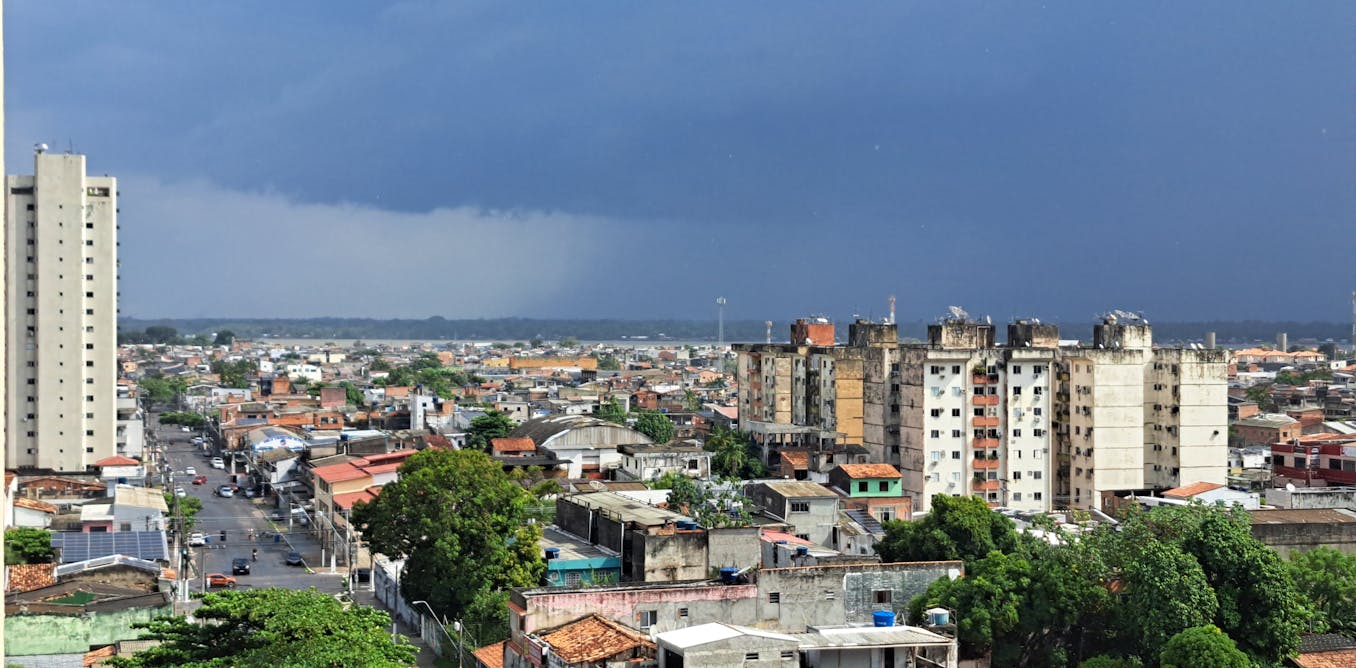On Monday night, Christie’s kicked off its spring marquee auctions with back to back auctions that brought in a combined $489 million with fees.
The Leonard & Louise Riggio: Collected Works sale, composed of 39 works from the late Barnes & Noble founder and his wife, leaned heavy on Surrealism, modernism, and Minimalism. Almost all of that collection sold amid uncertainty, but not without confidence—thanks in part to a house guarantee across the board. The 35 lots of the 20th Century sale that followed leaned museum-grade, with a handful of top-tier works anchoring the evening, including major canvases by Monet, Rothko, and Warhol.
While the night’s total with buyer’s premium of $489 million was higher than the $446 million pre-sale low estimate, the hammer total was well below at $409 million, indicating that the auction house did not meet expectations. (It did, however, beat out last year’s 20th century evening sale, which brought in a total of $413 million, on 64 lots and three withdrawals and squeak by the total of $486 million for the house’s evening sales last November.)
Overall, the night provided a telling snapshot of where the high-end market stands today: steady, still stratified, and leaning hard on proven names.
“It was a valiant effort to get some numbers that look good. I think that team worked hard,” art advisor Dane Jensen told ARTnews. “It was a tough effort. Not a disaster, but you can tell the market’s tight.”
“The estimates weren’t the sort that encourage fireworks but the sale was solid,” art advisor Hugo Nathan told ARTnews. “There’s nothing spectacular to say but the sale was solid. We are in uncertain times. I think people made decisions very late in the day.”
Below, a look at what sold, what didn’t, which lots proved the most magnetic, and which should have stayed in storage until next year.
Leonard & Louise Riggio: Collected Works
Total: $272 million
The evening’s opening act was also its most curated. The Riggio collection, long known among insiders but rarely seen in public, was notable for its consistent quality and range—from geometric precision to surrealist flair. The sale doubled as a public farewell to one of New York’s great collecting couples. Louise Riggio, who is downsizing from their storied apartment.
The sale’s hammer total reach $228 million for the 38 lots, or $272 million including buyer’s premiums, on a low estimate of $252 million. Out of the 39 lots, there were 23 with third party-guarantees and all had minimum price guarantees.
Piet Mondrian’s Composition With Large Red Plane, Bluish Gray, Yellow, Black and Blue (1922), which once hung in the vestibule of the Riggios’ Park Avenue apartment, carried an estimate in the region of $50 million, but hammered at $41 million, or $47.56 million with buyer’s fees. This was below the artist’s 2022 record of $51 million, but it was undoubtedly the sale’s headline act.
René Magritte’s L’empire des lumières was the second-highest lot, quickly hammering to a buyer on the phone with Christie’s Global President Alex Rotter for $30 million, or $34.9 million with fees.
Notably, L’empire des lumières previously appeared at auction in November 2017, and then in November 2023, both times at Christie’s New York. At the latter auction, the Surrealist painting also sold for the exact same amount with the buyer’s premium.
“It didn’t go down, but did we expect it to go up? Not really,” art advisor Megan Fox Kelly told ARTnews of the Magritte.
Magritte’s Les droits de l’homme (1947–48) and Alberto Giacometti’s Femme de Venise I both came with $15 million-$20 million expectations and spoke to the Riggio’s Surrealist leanings. Les droits de l’homme hammered at $13.5 million or $15.94 million with fees, while Femme de Venise I did slightly better at $15 million or $17.66 million with fees.
Picasso, Richter, Hepworth, and Agnes Martin rounded out the highlights in what felt like a confident—if cautious—play for modernist muscle.

A notable work that sold poorly was Stan Douglas’ print A Luta Continua, 1974. Despite a minimum price guarantee, the work hammered at $10,000 or $12,600 with fees, on a low estimate of $60,000.
Julio Gonzalez’s Forme sévère was also withdrawn. It had an estimate of $8 million to $12 million.
20th Century Evening Sale
Total: $217 million
If the Riggio sale was all about elegant restraint, the 20th Century sale that followed was about throwing heavyweight names into the ring. By comparison, the sale generated a hammer total of $181.1 million or $217 million including fees, against a low estimate of $194 million, with two notable withdrawn lots by the same artist. There were also 15 works with third-party guarantees.
Out of 35 remaining offerings, the top lot was Claude Monet’s Peupliers au bord de l’Epte, crépuscule which hammered at $37 million or $42.9 million with fees on an estimate of $30 million to $50 million. The winning bid was placed by a buyer on the phone with Keith Gill, Christie’s London head of Impressionist and modern art. It also had a third-party guarantee.
It was followed by Mark Rothko’s No. 4 (Two Dominants) [Orange, Plum, Black] from a collection of nine works belonging to Sid and Anne Bass from their home in Fort Worth, Texas that was custom-designed by renowned architect Paul Rudolph. That work came to market with an estimate in the region of $35 million and stood out as one of the sale’s most significant postwar works. It sold for $37.785 million with fees.
The third lot in the 20th Century sale to crack eight figures was Gerhard Richter’s Korsika (Schiu), which hammered at $12.9 million or $15.2 million with fees (estimate $9-12 million). The painting also had a third-party guarantee. Bidding was drawn out for seven and a half minutes, often in small increments, prompting the auctioneer (and Christie’s Global Head of Private Sales) Adrien Meyer to remark, “Have we planned dinner for our guests?”
The results for these three works are in line with the most recent Art Basel UBS report, which showed how the top end of the market for ultra high-priced works exceeding $10 million plummeted by 39 percent in 2024, following a 27 percent decline the previous year. These ultra-high-end works now represent just 18 percent of the market’s value, down from 33 percent in 2022.
“It’s not as if you’ve got dozens and dozens of people competing for that material,” art advisor Megan Fox Kelly noted to ARTnews.

Frank Stella’s Firuzabad III was an exception, bringing a surprising amount of energy into the room. The 10-foot by 15-foot painting on shaped canvas sold for $2.7 million at the hammer, $3.17 million with fees, one of the few works of the night to far exceed its high estimate of $2 million. It also came from the Bass House.
Gerhard Richter’s Korsika (Schiu), Frank Stella’s Itata, and Remedios Varo’s Revelación all contributed to a night more focused on range than spectacle. Dorothea Tanning’s Endgame also sold for $2.349 million on a high estimate of $1.5 million, setting a new auction record for the artist and highlighting ongoing interest in Surrealism.

Notably, Andy Warhol’s Big Electric Chair (1967–68), estimated around $30 million, marked a rare high-profile appearance for the artist this season. The painting, part of his “Death and Disaster” series, had last sold in 2019 for $19 million. With most top-tier Warhols now in long-term holdings, this work offered a rare chance to test collector appetite in a Basquiat-dominated moment. It was consigned from the collection of Belgian patrons Roger Matthys and Hilda Colle.
But the six-foot-wide painting failed to set off any sparks. That’s because it was one of two Warhols that were pulled mid sale.
Jensen attributed the withdrawals to the artist’s struggling market and decline in demand for “disaster images.”
“I think in this kind of political climate, people probably don’t want that kind of imagery,” he said, referring to Big Electric Chair. “This doesn’t feel like what you want to spend your money on.”
Christie’s bet on breadth—and major guarantees—paid off with a solid showing, if not the fireworks and nine-figure prices of past seasons. Still, it was a reminder that even in a cooled market, the right names (and the right shade of red, in Mondrian’s case) can still draw heat, while one-time giants like Warhol these days aren’t standing so tall.
The results also continue to illustrate an increasingly fragmented art market: Things that were exceptional and plucked the heartstrings of interested buyers did well.
“The Richter is a great example. That was an emotional picture: the boat, the calm sea, the sunset. An image of serenity in a chaotic time,” Nathan said. The two withdrawn Warhols were on the opposite side of the aesthetic spectrum. It’s just not the time and, according to Rotter, the consignors of each Warhol (it was two different people, he said) decided that keeping them in the sale wasn’t worth the risk.

Still, some people in the room had more than art on their minds. In the second row, an unidentified, but well seated, gentleman held up his phone to the people sitting around him. He was watching the Knicks game live. At the time, (it was still the first quarter) the Knicks were up 24-23 against the Boston Celtics. At the end of that quarter, while Vincent van Gogh’s In de Duinen (In the Dunes) was up for grabs, the Celtics had taken the lead 39-28.
For those of you curious, the Knicks won the game 121-113, leading the conference semifinals series against the Celtics 3-1. The team’s next game is on Wednesday at 7 p.m., the same start time as Christie’s 21st Century Evening Sale.

The post “Christie’s Brings in $489 M. from Two Evening Sales in New York, Led by Mondrian Painting at $47.6 M.” by Karen K. Ho was published on 05/13/2025 by www.artnews.com






































Leave a Reply